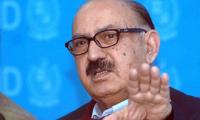Solid and liquid, both wastes are becoming a serious issue, especially in large cities. In mega-metropolitan cities it is becoming a menace.
Recently, waste-to-electricity production has received much publicity and attention. There are other options like biogas, compost and RDF (refuse-derived fuel) production, that may be worth examining as well.
Waste collection and its disposal both are important and complimentary components of a waste management programme. While collection is relatively well known (dust-bins and collection vehicles), waste disposal has often created controversy and issues. Waste is often dumped in open areas in an unorganized fashion, creating all sorts of social and environmental problems. Land is expensive and populated areas are expanding near and around cities. Waste is generated daily and keeps accumulating, putting pressure on waste land resources. Thus waste cannot be left untreated and has to be properly disposed.
There are two major ways to handle waste disposal – direct incineration and generation of electricity in what is called Waste-to-Energy (WtE) plants; and indirect disposal which we will discuss a bit later. WtE plants are quite popular and common in Europe. Both power and heat are produced and utilized. Hot water is produced through waste heat generation and distributed in residential areas through pipelines .In northern and central Europe, this method is specially adopted. The main advantage of this method is less space requirement and waste reduction. Waste is reduced to ashes which are 10-15 percentof the original waste input. The main disadvantages are high capex and environmental emissions. Mercury and dioxin and other hazardous emissions are generated which have to be cleaned increasing capex.
In cost terms, around $3.5 million, more than twice the normal fossil power plants, is involved. The cost of electricity generated can be quite high, as much as 10-14 USc. In these days of cheap solar and wind of 4-5 USc per kWh, this is rather a high cost. There is also a possibility of bypassing pollution /emission control rules and pocketing the investment via collusion with the regulatory and other authorities. Capital padding is not uncommon in this and other similar countries. Emission control is a problem even in the US, where WtE plants are discouraged. Europe has adopted this possibly because of the lesser space requirement. The way the environmental movement is going, it is quite possible that even Europe may start discouraging WtE plants.
In Pakistan, there has been a mistaken impression that WtE plants may solve our electric power scarcity problem. The fact is that a very small amount of electricity is produced. WtE plants are highly inefficient and produce low-grade waste heat, which in Europe is utilized in the form of hot water distribution, while in Pakistan such possibilities may be problematic.
The other indirect m route or method consists of a number of steps: a) segregation and recycling; b) landfill and bio-gas generation: and c) RDF making. This route is simpler, environmentally safer and less capital intensive. Waste segregation is preferably done at source. In many jurisdictions, there are two or three bag collection systems enforced by municipalities. This may be difficult to practice in chaotic developing countries. Waste segregation in that case is done on disposal sites through mechanical, aeration and magnetic separators. This can be capital extensive.
The other alternative is to utilize mechanical belt conveyors and employ labour for manual sorting and segregation. Recyclable material like paper, glass and metals is segregated for recycling and sold to various industries as a useful raw material. Organic material (vegetable and food waste etc) is put in a sanitary and organized landfill; a rubber-lined and drainage provided land excavation is made wherein organic waste is dumped in an organized manner. Biogas can be produced from this landfill as well. The remaining materials like plastic, rubber, textiles, rags etc are shredded, screened and palletized. This is called RDF.
RDF quality, composition and CV depends on the care employed in waste segregation and separation and also on how many recyclable items having calorific value are extracted prior to the RDF making. The RDF calorific value can be variable but generally is 56-60 percent of the CV of imported coal and saves 40 percent of fuel cost with reference to coal.
RDF is sold as a fuel comparable to and partially replacing coal. Extractive industries like cement, bricks, tiles and glass making are quite popular end-users in many countries. In Europe, there are targets and policies in many countries to replace normal fossil fuel like oil and coal by alternative fuels like RDF. In Germany, and Austria, in the cement industry, more than 60 percent of fuel used is RDF; in Czechoslovakia 54 percent, Poland 40 percent, and the EU-27 average is 30.52 percent. In Pakistan also, two progressive cement manufacturers (DG Khan and Fauji Cement) are doing good to their bottom line by utilizing RDF in their furnaces. Both the companies are buying raw MSW and convert it to RDF themselves.
There is a large cement sector in Pakistan producing 41 million MT per year of cement in 24 plants widely dispersed in all parts of Pakistan. The cement sector should be consuming around eight million tons of imported coal, resulting in foreign exchange drain of $600-800 million per year. Half of this can be substituted by RDF and half by local coal.
We are facing a current account deficit problem. The cement sector may be encouraged or even obliged to convert to local Thar coal and RDF; 30-40 percent RDF and the remaining coal. RDF can be burnt in coal power plants as well. Textile and other industries can use it as well. RDF can be used by the poor for their cooking needs. At Rs5 per kg, it is much cheaper than charcoal, kerosene and LPG. Thus, two birds are killed with one stone – getting rid of solid waste and getting cheap fuel, and getting bio-gas and fertilizer from landfill.
Solid waste management, from cradle to grave (collection to disposal) can be very simple but requires an organized approach. Waste has economic value in the form of energy it contains. It is now amenable to private sector participation, replacing municipalities’ direct involvement in waste collection and management. Both in Lahore and Karachi, waste collection companies have been employed.
RDF appears to be a better, environmentally acceptable and cheaper option. It provides many associated products like bio-gas and compost. Other approaches may also be applied like regional or zonal waste processing, say, in and around food centres and vegetable markets where direct composting and biogas production may be feasible. Sewerage can be mixed in solid waste for more biogas production.
The issue is not technical or economic but is social and political. So how to – and how not to – streamline such interests and issues to a common purpose? Karachi is a ready example.
The writer is a former member of the Energy Planning Commission and author of ‘Pakistan’s EnergyIssues: Success and Challenges’.
Email: akhtarali1949@gmail.com
People stand in line up as election officials check their ballot papers during voting general election at a polling...
Women show their voter identity cards as they stand in a queue before casting their votes in Agartala. — PTIThe 18th...
Former prime minister Imran Khan. — Instagram/ imrankhan.ptiAn old saying has it that “when you dance with the...
Kashmiris in Indian illegally occupied Kashmir protesting against the Indian occupation as the forces of India looked...
A representational image showing residents walking at a wholesale market in Karachi. — AFP/FileOnce again there is...
A representational image showing late Pakistani human rights activist and Supreme Court lawyer Asma Jahangir. —...







